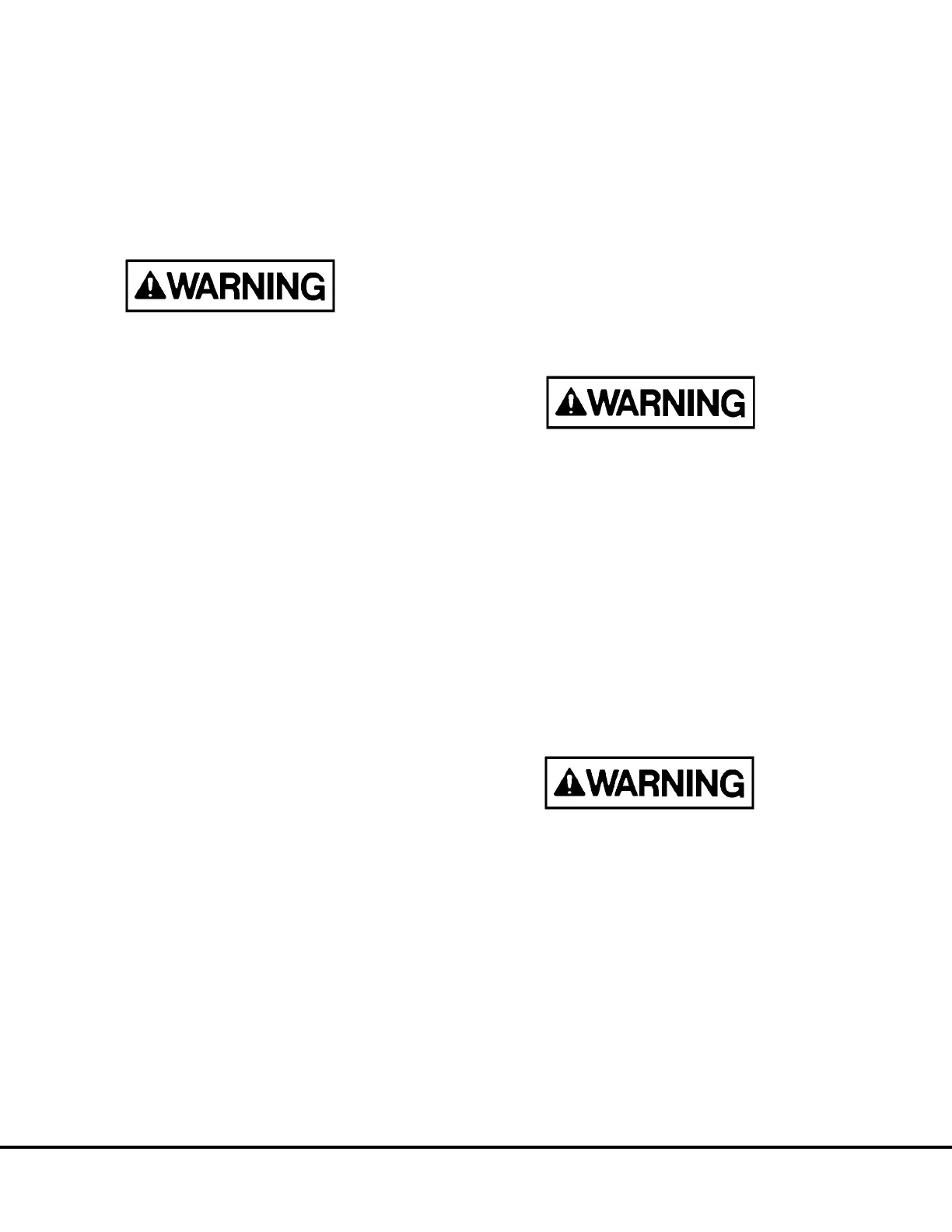3. If removed, install charging valve with new O-
ring(9, Figure 4-3). Lubricate O-ring with clean
HYDRAIR
®
oil.
4. Tighten valve body (large hex, 6) to 16.5 ft. lbs.
(22.4 N.m) torque. The valve swivel nut (small
hex, 4) must be unseated counterclockwise three
full turns.
Dry nitrogen is the only gas approved for use in
HYDRAIR
®
II suspensions. Charging of these
components with oxygen or other gases may re-
sult in an explosion which could cause fatalities,
serious injuries and/or major property damage.
Use only nitrogen gas meeting the specifications
shown in chart (Figure 4-5).
5. Install HYDRAIR
®
Charging Kit and bottle of pure
dry nitrogen. Charge the suspension with nitro-
gen gas to the pressure shown in Figure 4-2. DO
NOT use an overcharge of nitrogen to lift the
suspension off the blocks.
6. Shut off gas and remove charging kit components.
7. If charging valve is being reused, tighten swivel
nut (4, Figure 4-3) to 4 ft. lbs. (5.4 N.m) torque.
8. If a new charging valve is being used, tighten
swivel nut to 10.5 ft. lbs. (14.2 N.m) torque, then
loosen and retighten swivel nut to 10.5 ft. lbs.
(14.2 N.m) torque. Again loosen swivel nut and
retighten to 4 ft. lbs. (5.4 N.m) torque. Replace
valve cap (1) and tighten to 2.5 ft. lbs. (3.3 N.m)
torque (finger tight).
9. Replace protective guard over charging valve.
10. Raise truck frame with crane or jacks to release
the nitrogen charging dimension blocks and re-
move these blocks.
The front HYDRAIR
®
suspensions are now ready for
operation. Visually check extension with truck both
empty and loaded. Record extension dimensions.
Maximum downward travel is indicated by the dirt ring
at the base of the piston. Operator comments on
steering response and suspension rebound should
also be noted.
REAR SUSPENSION
1. Park unloaded truck on a hard, level surface.
Apply parking brake.
2. Thoroughly clean area around charging valve on
suspensions. Remove protective covers from
charging valves and metal covers from the sus-
pension piston.
NOTE: If suspensions are collapsed, it will be neces-
sary to raise the truck frame with a crane or jacks to
install oiling dimension blocks. Insure lifting apparatus
capacity is adequate to hold truck weight.
When the blocks are in place on a suspension, they
must be secured in place with a strap or other
means to insure the blocks staying in place while
being used. An unsecured block could fly loose as
weight is applied, presenting the possibility of
serious injury and/or damage.
Rear Suspension Oiling
1. If suspensions are extended, position and secure
oiling height dimension blocks (supports) in place
(See Figure 4-4) so the blocks are seated be-
tween the piston flange and the cylinder housing.
Take care that blocks do not mar or scratch plated
surface of the piston nor damage the wiper seals
in the cylinder barrel.
Make certain all personnel are clear and support
blocks are secure before relieving nitrogen pres-
sure from the suspension. Use a face mask or
goggles when venting nitrogen.
2. Remove charging valve cap. Turn the charging
valve swivel nut (small hex) counterclockwise
three full turns to unseat valve seal. DO NOT
TURN LARGE HEX. The charging valve body
has a bleeder groove in its mounting threads but
for safety of all personnel the valve body MUST
NOT be loosened until ALL nitrogen pressure has
been vented from the suspension.
!WARNING! Wear a face mask or goggles
while venting nitrogen pressure.
H4-4 Oiling and Charging Procedures H04005 9/99
730E, 830E, and 930E
